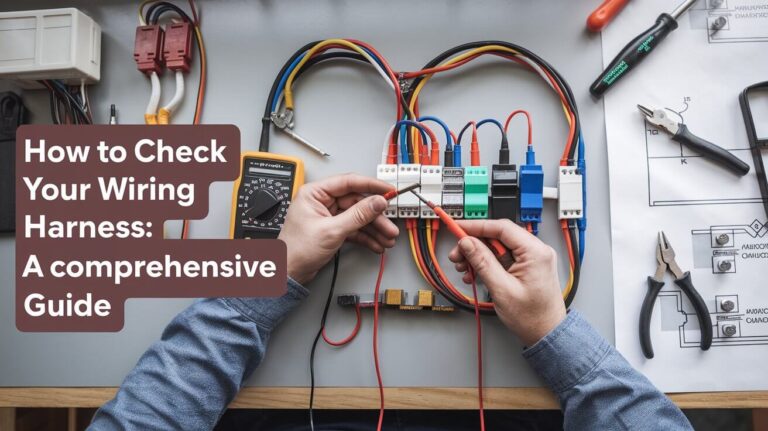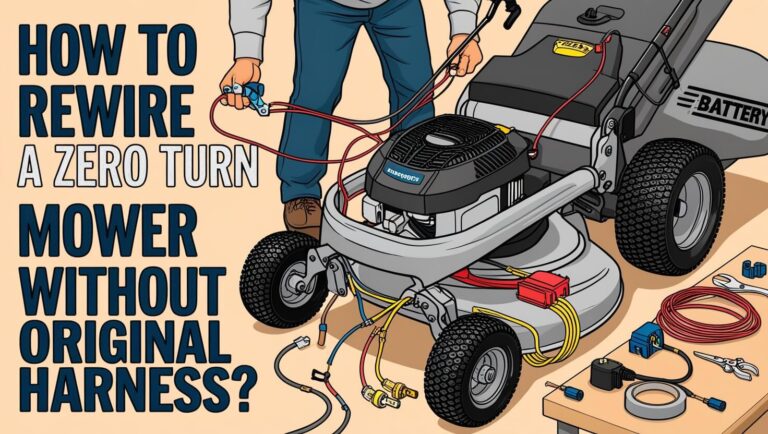Can You Bypass the NID for DSL Wiring? Full Guide & Risks

Bypassing the NID (Network Interface Device) for DSL wiring is a tempting option for homeowners who want to optimize their internet connection. However, it’s not a straightforward yes or no answer. While you can bypass the NID under certain conditions, it’s important to understand the role of the NID, the risks involved, and the alternative solutions that could enhance your connection without jeopardizing your network or safety.
In this post, we’ll delve into everything you need to know about NID, the reasons for considering bypassing it, and how to make an informed decision.
What is the NID and Its Role in DSL Wiring?
The Function of the NID
The NID (Network Interface Device) is a small box installed on the exterior of homes or in basements. It acts as a demarcation point between the telecommunication provider’s network and the internal wiring of a building. Essentially, it connects the provider’s service to your home’s internal telephone and DSL network. The NID is responsible for managing several important functions:
- Signal splitting: It separates voice and data signals (DSL) to prevent interference.
- Surge protection: Shields internal wiring and devices from power surges or other external electrical issues.
- Fault isolation: Allows homeowners and technicians to troubleshoot issues by providing a test jack that bypasses internal wiring.
The NID plays a vital role in protecting your internal network and devices from electrical surges while allowing easier fault isolation during troubleshooting.
How DSL Works with the NID
DSL (Digital Subscriber Line) technology uses telephone lines to provide internet service. The signal travels from your provider to the NID, where it is split between voice and data. In many cases, a DSL filter or splitter is used to keep the signals from interfering with one another. The NID also offers an interface for testing your DSL line without having to worry about potential internal wiring faults.
Reasons to Consider Bypassing the NID
There are legitimate reasons you might consider bypassing the NID when setting up your DSL wiring, though these are often situational. Below are common motivations:
1. Old or Faulty Wiring
One of the most common reasons for bypassing the NID is the presence of old or faulty internal wiring. Over time, wiring within homes—especially in older buildings—may degrade or become damaged. This can lead to interference, resulting in slower internet speeds and frequent disconnections.
2. Improving DSL Signal Quality
In some instances, the length of internal wiring or how it’s configured within the home can negatively affect the quality of your DSL connection. By bypassing the NID, you might run a more direct and cleaner connection from the point of entry to your modem. This could improve connection stability and speed.
3. Avoiding Interference from Other Devices
The NID often connects multiple devices within the home, including phones, security systems, and even fax machines. Sometimes, these devices can introduce noise or interference on the DSL line. Bypassing the NID eliminates the possibility of interference from such devices.
4. Distance from NID to Modem
If your NID is located far from where you want to place your modem, internal wiring could lead to signal degradation. A home run wiring method, which runs a single direct line from the NID to your modem, may help bypass unnecessary internal wiring and avoid signal loss over distance.
How Bypassing the NID Can Affect DSL Performance
While bypassing the NID can, in theory, improve your DSL signal, it’s not without trade-offs.
1. Elimination of Surge Protection
One of the most important functions of the NID is to offer surge protection for your home wiring. If you bypass the NID, you could expose your internal network and devices to electrical surges, which could damage your modem, routers, and other connected equipment.
2. Loss of Fault Isolation
Bypassing the NID means losing the ability to easily troubleshoot and isolate network problems. The NID includes a test jack that allows you to check if the issue lies with your provider’s network or your internal wiring. Without it, identifying the source of a problem can become more complicated and costly, as it may require a technician’s intervention.
3. Potential Signal Loss
Though bypassing the NID can theoretically improve your connection by reducing interference, improperly configuring your wiring or failing to maintain proper signal protection can actually result in a worsening of signal quality. Without the filters and splitters that a NID often uses, noise and interference from other devices may creep back into your line.
Can You Legally Bypass the NID?
Legal and Provider Policies
Before you attempt to bypass the NID, it’s important to check whether it’s legal or advisable under your telecommunication provider’s policies. In most cases, tampering with the NID itself (i.e., the part managed by the provider) is against their terms of service. The provider owns and manages the NID, and you could risk voiding your service agreement or being penalized for tampering with the equipment.
However, the customer-side wiring—inside your home—can usually be modified. If you’re considering bypassing the NID, you should make sure you’re only working with the customer-accessible side of the NID.
Step-by-Step Guide to Bypassing the NID for DSL Wiring
If you’re confident that bypassing the NID is the right decision for your setup, here’s a step-by-step guide to help you through the process.
Tools and Materials Needed
- DSL Modem
- Ethernet cable (preferably CAT5e or CAT6)
- DSL splitter/filter
- Wire cutter/stripper
- Screwdriver
- Insulated wiring (if needed for new runs)
1. Locate the NID
The NID is typically mounted outside your house or in the basement. Look for a small gray or beige box. In some cases, it’s labeled with your telecom provider’s name.
2. Test the DSL Signal Using the NID
Before making any changes, it’s important to verify that the signal coming into the NID is working correctly. Most NIDs include a test jack that allows you to connect a DSL modem directly to the incoming line. Plug your modem in here and see if the connection works properly. If the connection is slow or unstable, the problem may be with your provider, not your internal wiring.
3. Run a Direct Home Run Line
One of the simplest ways to bypass the NID without losing the essential functions is by running a home run line. This involves connecting a dedicated wire from the NID directly to your modem. Here’s how to do it:
- Open the customer-accessible side of the NID.
- Identify the wiring that connects the NID to your home’s internal wiring.
- Run a new Ethernet cable directly from the NID to the room where your modem is located.
- Use a DSL splitter to separate voice and data signals, or skip the splitter if you’re using the line exclusively for DSL.
4. Ensure Proper Surge Protection
Since bypassing the NID removes the surge protection it offers, consider installing a dedicated surge protector for your DSL line. This will help protect your modem and other connected devices from electrical surges that could damage them.
5. Test the New Connection
Once the new wiring is in place, connect your DSL modem to the new line and test the connection. Ideally, you should notice an improvement in speed and stability compared to the old internal wiring.
Alternative Solutions to Bypassing the NID
Bypassing the NID isn’t always the best solution. There are other ways to improve your DSL connection without eliminating the protections and convenience that the NID offers.
1. Home Run Wiring Setup
Instead of completely bypassing the NID, a home run wiring setup provides a dedicated line from the NID to your modem while still using the NID’s filters and surge protection. This ensures a clean and direct connection, reducing interference from old or faulty wiring without sacrificing protection.
2. External DSL Splitters
Installing a DSL splitter at the NID allows you to separate the voice and DSL signals at the point of entry, which can dramatically reduce signal interference caused by other devices within the home. This is a great option if you want to keep using your landline phone while improving your DSL performance.
3. Upgrade Internal Wiring
If your home’s internal wiring is old or subpar, consider upgrading it with CAT5e or CAT6 cables. These cables are better suited for high-speed internet and can carry both voice and data signals more efficiently than older wiring. Upgrading your wiring can provide many of the benefits of bypassing the NID without the associated risks.
Potential Risks and Downsides of Bypassing the NID
Bypassing the NID is not without its risks. Here are some key downsides to consider:
1. Surge Protection Loss
The NID offers built-in surge protection that safeguards your home’s network and connected devices from external electrical surges. Bypassing the NID means losing this layer of protection, which could result in damaged devices.
2. Troubleshooting Difficulties
Without the NID, isolating the source of network problems becomes much more difficult. Telecom providers rely on the NID to test and diagnose issues, and bypassing it could lead to slower troubleshooting and higher service fees if they need to send a technician.
3. Impact on Future Home Sales
If you plan on selling your home, having a fully functional NID is often seen as a basic requirement. Future buyers might expect the NID tocompliant with telecom standards. Additionally, tampering with the NID could potentially violate your service agreement with your internet service provider, causing complications during inspections or negotiations.
4. Provider Responsibility
Your telecom provider owns the NID, which means they’re responsible for maintaining the external wiring up to that point. Bypassing it may shift more of the maintenance responsibility to you. If any issues arise in the future, the provider could charge for repairs that would otherwise be covered under their standard service agreement.
Professional Installation vs. DIY Bypass
When it comes to bypassing the NID, many people ask whether it’s worth trying a DIY installation or hiring a professional. Here’s a look at the pros and cons of both approaches:
DIY Approach
Pros:
- Cost-effective: Running your own wiring or bypassing the NID can save on installation fees.
- Control: You get to choose the exact wiring route and setup.
Cons:
- Risk of errors: If you’re not familiar with wiring, you might accidentally damage your network or expose your home to electrical hazards.
- No professional testing: A technician will have specialized equipment to test for optimal signal quality.
Professional Installation
Pros:
- Guaranteed quality: Professionals know how to minimize interference and maximize DSL performance.
- Warranty and safety: Providers often guarantee their work, and you can avoid the risk of tampering with telecom equipment.
Cons:
- Cost: Professional installation can be expensive, especially if significant rewiring is needed.
FAQs on Bypassing the NID for DSL Wiring
Can I Use the Same Wire Pair for DSL and Voice?
Technically, yes. However, it’s important to use a DSL splitter or filter to separate the data and voice signals. Without a splitter, interference can occur, causing your DSL connection to slow down or become unstable.
Will Bypassing the NID Improve My DSL Speed?
Bypassing the NID could improve your DSL speed, especially if you have old or faulty wiring. However, this depends on several factors, including the quality of your home’s wiring, the distance from the NID to your modem, and whether other devices are causing interference.
Is It Safe to Bypass the NID?
While it’s possible to safely bypass the NID, you’ll need to take precautions. Make sure to implement alternative surge protection and follow proper wiring guidelines to avoid damage to your devices and minimize risks.
Conclusion
Bypassing the NID for DSL wiring is an option that some homeowners explore when dealing with slow internet speeds or internal wiring issues. However, before making the decision, it’s important to weigh the potential risks against the benefits. While bypassing the NID can improve signal quality in certain cases, you also lose critical features like surge protection and fault isolation.
If you’re dealing with poor DSL performance, there are alternative solutions, such as upgrading your internal wiring or installing a dedicated home run line, that may offer a better balance between performance and protection. Always remember that tampering with the NID can have legal implications and could void your service agreement with your telecom provider.
For most users, professional installation or alternative wiring solutions will offer a better, safer outcome than bypassing the NID entirely. But for those who are willing to take the risks and understand the process, bypassing the NID could provide a noticeable boost to your DSL performance.




